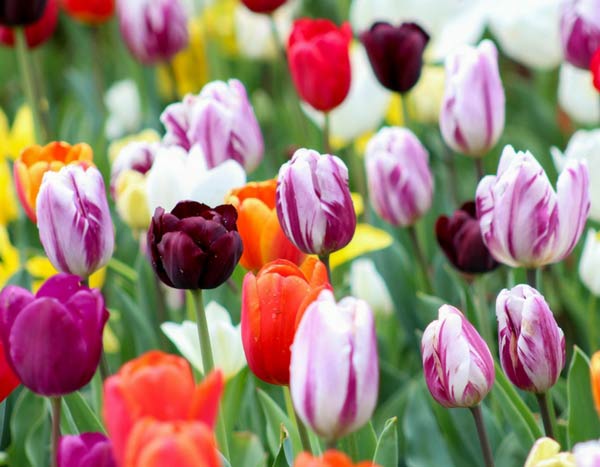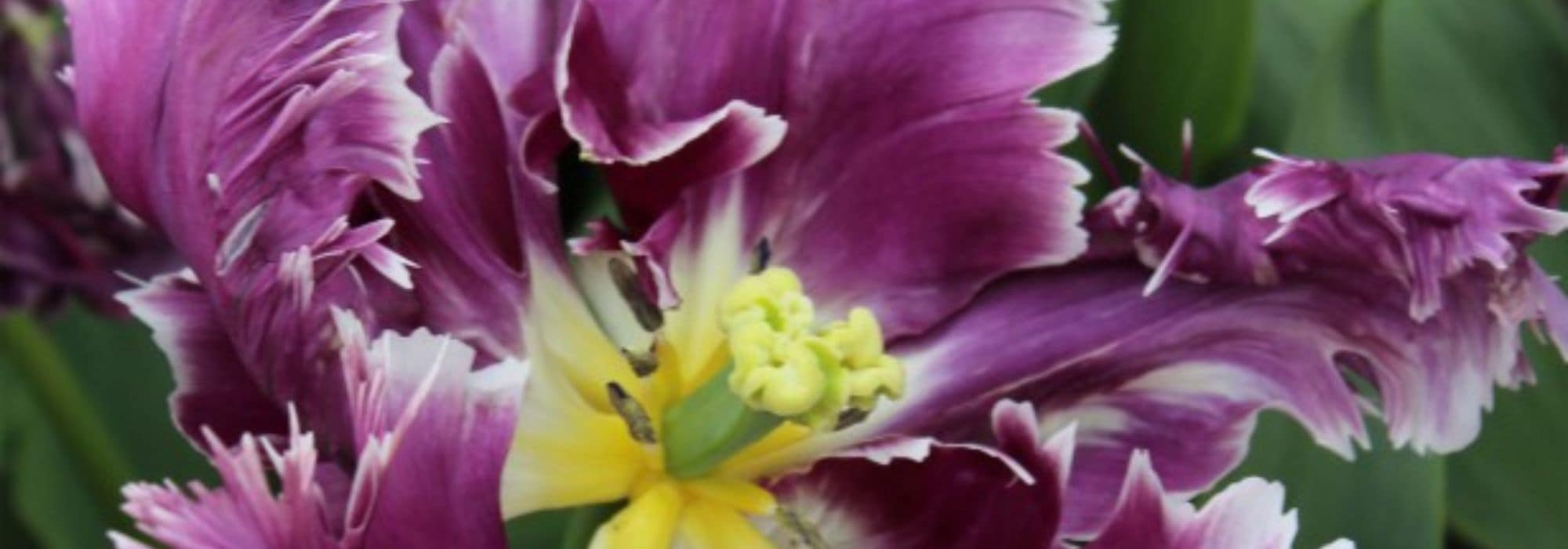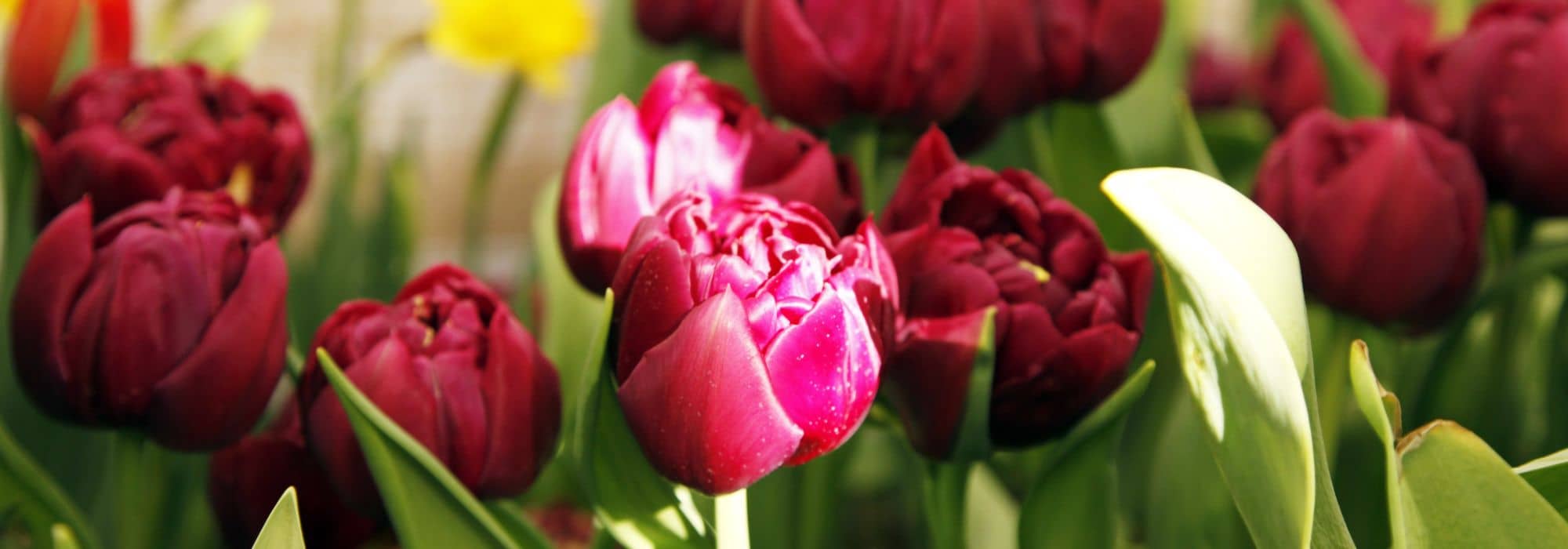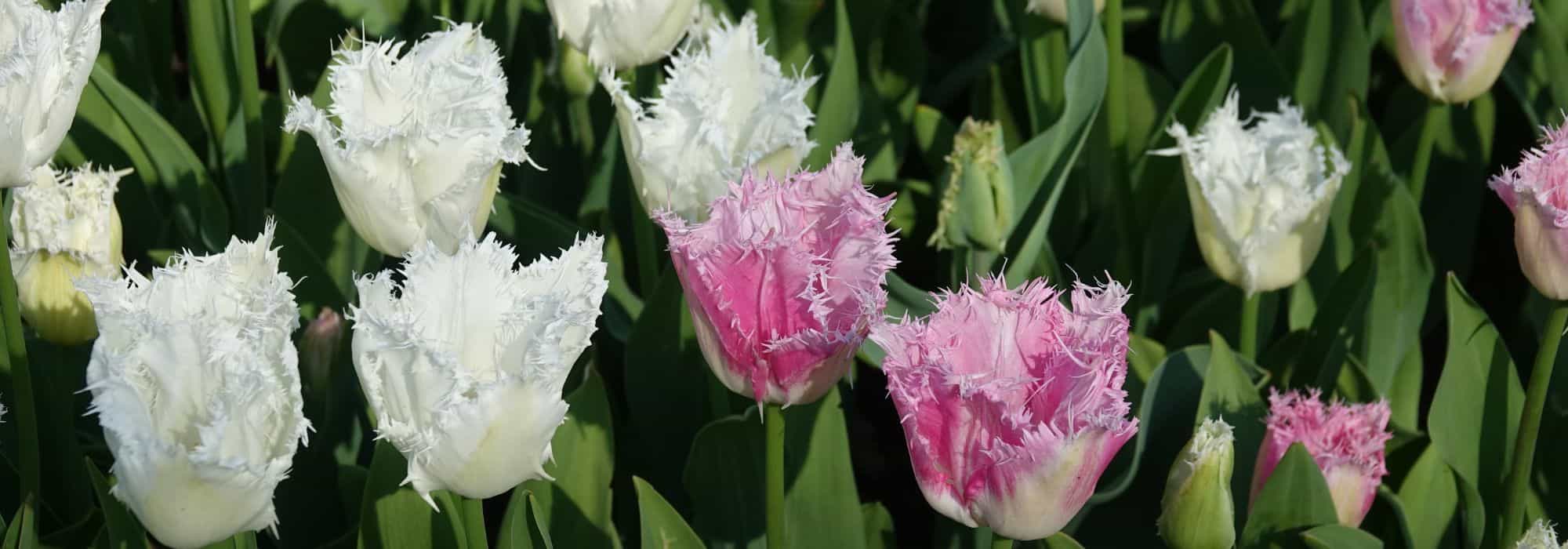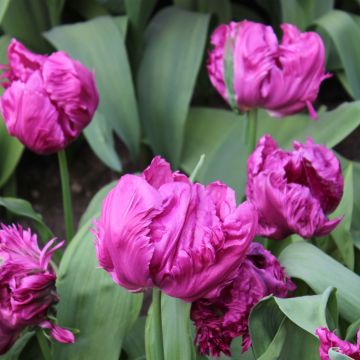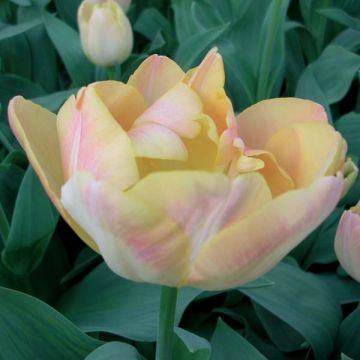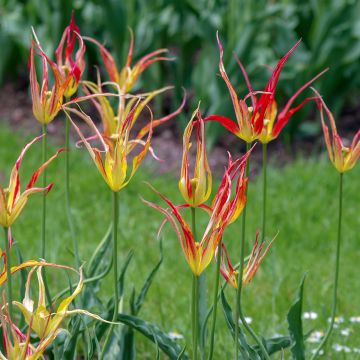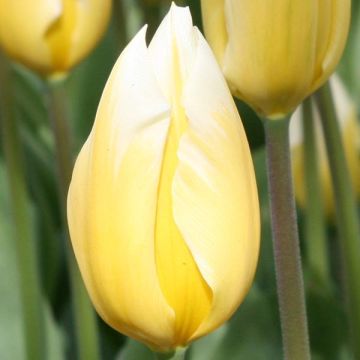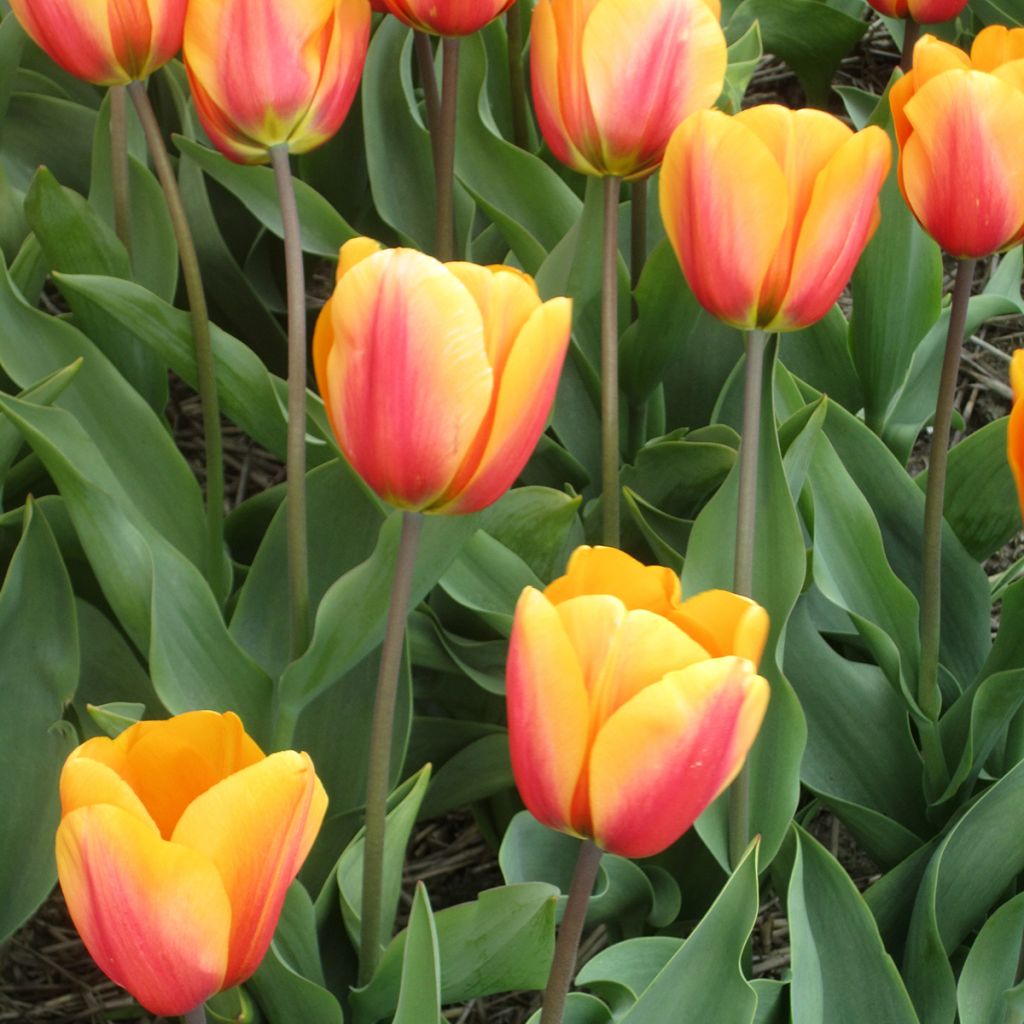

Tulipa Darwin hybrid Cash - Darwin hybrid Tulip
Tulipa Darwin hybrid Cash - Darwin hybrid Tulip
Tulipa Darwin hybride Cash
Darwin Hybrid Tulip
Special offer!
Receive a €20 voucher for any order over €90 (excluding delivery costs, credit notes, and plastic-free options)!
1- Add your favorite plants to your cart.
2- Once you have reached €90, confirm your order (you can even choose the delivery date!).
3- As soon as your order is shipped, you will receive an email containing your voucher code, valid for 3 months (90 days).
Your voucher is unique and can only be used once, for any order with a minimum value of €20, excluding delivery costs.
Can be combined with other current offers, non-divisible and non-refundable.
This plant carries a 6 months recovery warranty
More information
We guarantee the quality of our plants for a full growing cycle, and will replace at our expense any plant that fails to recover under normal climatic and planting conditions.
Would this plant suit my garden?
Set up your Plantfit profile →
Description
The 'Cash' Darwin Hybrid Tulip is an irresistible variety with its large flowers in warm colours that brighten up spring. Green leaves with subtle blue reflections emerge from medium-sized, sturdy stems, bearing single corollas. The dominant yellow-orange hue is beautifully complemented by a flame of raspberry pink. Easy to grow in most well-drained soils, hardy, this tulip has the gift of capturing the sun in the garden and will also give you splendid bouquets for your interior.
The 'Cash' Darwin Hybrid Tulip belongs to the Liliaceae family, once rich in genera which have been reclassified in other families for many. Today, there are just over 400 species distributed in a dozen genera, the best known outside the large group of tulips being the lily and the fritillary. While there are a few varieties of botanical tulips available commercially, the majority are horticultural varieties, like 'Cash'. There are 15 divisions of tulips, the 4th being the group of Darwin hybrids, characterised by large single ovoid flowers appearing in mid-season, borne on long weather-resistant stems.
'Cash' is slightly shorter than the others and will reach approximately 45 to 50 cm (18 to 20in) in height when in bloom. The corollas, which appear towards the end of April, consist of 6 tepals, a term used to describe petals and sepals when they have the same morphology. These single flowers have a perfect geometric shape, rectangular with rounded edges, moderately opening at the top. Their dominant colour is a particularly bright coppery yellow-orange, enhanced by a flame of raspberry pink, starting at the base and spreading to the top of the tepals. This complementary combination of hues is transcended by the sunlight that makes the corollas blaze when it shines through them. The widely lanceolate foliage has a beautiful slightly glaucous green appearance, forming a perfect backdrop for the flowers above it. Although scentless, they are very good candidates for making bouquets. This is no coincidence as tulips in this group are the most widely grown for the cut flower trade. This tulip will be excellent when planted en masse, in full sun or possibly in partial shade, and will brighten up spring with its vibrant flowers. The flowering takes place in April-May, with each flower lasting several days before fading.
The 'Cash' Tulip finds its place in large beds and of course in bouquets. It attracts all eyes in spring with its joyful flowers capable of brightening up the garden even on dark days. It will be perfect in a border, combined with other bulbs such as white Narcissus, or if you like strong contrasts, mixed with Muscari latifolium, whose long clusters of blue flowers with a violet base create a chiaroscuro plant tableau. This tulip will also find its place in a border, alongside perennial plants or ornamental bushes. A few clumps of iris in the background will allow you to create surprise, such as with the Confiserie German Iris, in violet tones. Don't forget to also incorporate summer blooms, such as Daylilies with cheerful colours of yellow, red, orange, salmon, and autumn blooms, drawing from the wide range of Asters, in order to enjoy flowers throughout the season.
Plant habit
Flowering
Foliage
Safety measures
Botanical data
Tulipa
Darwin hybride
Cash
Liliaceae
Darwin Hybrid Tulip
Cultivar or hybrid
ingestion
Cette plante est toxique si elle est ingérée volontairement ou involontairement.
Ne la plantez pas là où de jeunes enfants peuvent évoluer, et lavez-vous les mains après l'avoir manipulée.
Pensez à conserver l'étiquette de la plante, à la photographier ou à noter son nom, afin de faciliter le travail des professionnels de santé.
Davantage d'informations sur https://plantes-risque.info
Planting and care
Plant the bulbs in autumn, from September to December, at a depth of 15 cm (6in), spacing them 10 cm (4in) apart. The planting should be done in ordinary soil, slightly acidic, neutral, or slightly alkaline, loose, well-prepared, and well-drained. Never add manure or poorly decomposed compost to the planting soil, as this could cause the bulbs to rot. Tulips will grow well in moist to dry soil in summer. Plant them in a sunny or semi-shaded location. Once flowering is over, it is preferable to remove the fruits to avoid exhausting the plant.
Planting period
Intended location
Care
Planting & care advice
This item has not been reviewed yet - be the first to leave a review about it.
Similar products
Haven't found what you were looking for?
Hardiness is the lowest winter temperature a plant can endure without suffering serious damage or even dying. However, hardiness is affected by location (a sheltered area, such as a patio), protection (winter cover) and soil type (hardiness is improved by well-drained soil).

Photo Sharing Terms & Conditions
In order to encourage gardeners to interact and share their experiences, Promesse de fleurs offers various media enabling content to be uploaded onto its Site - in particular via the ‘Photo sharing’ module.
The User agrees to refrain from:
- Posting any content that is illegal, prejudicial, insulting, racist, inciteful to hatred, revisionist, contrary to public decency, that infringes on privacy or on the privacy rights of third parties, in particular the publicity rights of persons and goods, intellectual property rights, or the right to privacy.
- Submitting content on behalf of a third party;
- Impersonate the identity of a third party and/or publish any personal information about a third party;
In general, the User undertakes to refrain from any unethical behaviour.
All Content (in particular text, comments, files, images, photos, videos, creative works, etc.), which may be subject to property or intellectual property rights, image or other private rights, shall remain the property of the User, subject to the limited rights granted by the terms of the licence granted by Promesse de fleurs as stated below. Users are at liberty to publish or not to publish such Content on the Site, notably via the ‘Photo Sharing’ facility, and accept that this Content shall be made public and freely accessible, notably on the Internet.
Users further acknowledge, undertake to have ,and guarantee that they hold all necessary rights and permissions to publish such material on the Site, in particular with regard to the legislation in force pertaining to any privacy, property, intellectual property, image, or contractual rights, or rights of any other nature. By publishing such Content on the Site, Users acknowledge accepting full liability as publishers of the Content within the meaning of the law, and grant Promesse de fleurs, free of charge, an inclusive, worldwide licence for the said Content for the entire duration of its publication, including all reproduction, representation, up/downloading, displaying, performing, transmission, and storage rights.
Users also grant permission for their name to be linked to the Content and accept that this link may not always be made available.
By engaging in posting material, Users consent to their Content becoming automatically accessible on the Internet, in particular on other sites and/or blogs and/or web pages of the Promesse de fleurs site, including in particular social pages and the Promesse de fleurs catalogue.
Users may secure the removal of entrusted content free of charge by issuing a simple request via our contact form.
The flowering period indicated on our website applies to countries and regions located in USDA zone 8 (France, the United Kingdom, Ireland, the Netherlands, etc.)
It will vary according to where you live:
- In zones 9 to 10 (Italy, Spain, Greece, etc.), flowering will occur about 2 to 4 weeks earlier.
- In zones 6 to 7 (Germany, Poland, Slovenia, and lower mountainous regions), flowering will be delayed by 2 to 3 weeks.
- In zone 5 (Central Europe, Scandinavia), blooming will be delayed by 3 to 5 weeks.
In temperate climates, pruning of spring-flowering shrubs (forsythia, spireas, etc.) should be done just after flowering.
Pruning of summer-flowering shrubs (Indian Lilac, Perovskia, etc.) can be done in winter or spring.
In cold regions as well as with frost-sensitive plants, avoid pruning too early when severe frosts may still occur.
The planting period indicated on our website applies to countries and regions located in USDA zone 8 (France, United Kingdom, Ireland, Netherlands).
It will vary according to where you live:
- In Mediterranean zones (Marseille, Madrid, Milan, etc.), autumn and winter are the best planting periods.
- In continental zones (Strasbourg, Munich, Vienna, etc.), delay planting by 2 to 3 weeks in spring and bring it forward by 2 to 4 weeks in autumn.
- In mountainous regions (the Alps, Pyrenees, Carpathians, etc.), it is best to plant in late spring (May-June) or late summer (August-September).
The harvesting period indicated on our website applies to countries and regions in USDA zone 8 (France, England, Ireland, the Netherlands).
In colder areas (Scandinavia, Poland, Austria...) fruit and vegetable harvests are likely to be delayed by 3-4 weeks.
In warmer areas (Italy, Spain, Greece, etc.), harvesting will probably take place earlier, depending on weather conditions.
The sowing periods indicated on our website apply to countries and regions within USDA Zone 8 (France, UK, Ireland, Netherlands).
In colder areas (Scandinavia, Poland, Austria...), delay any outdoor sowing by 3-4 weeks, or sow under glass.
In warmer climes (Italy, Spain, Greece, etc.), bring outdoor sowing forward by a few weeks.


































